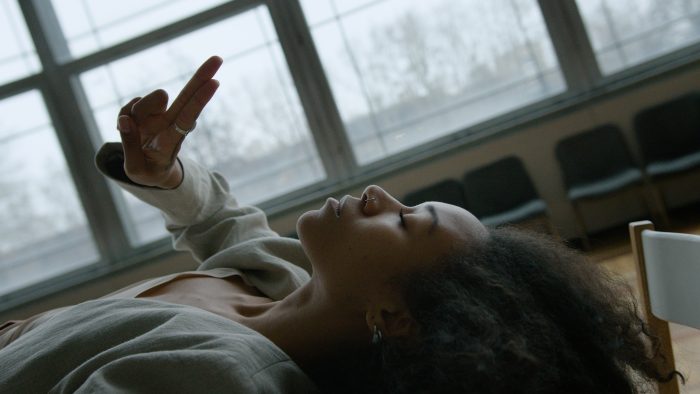The below excerpt was taken from Dr. Stacie Graham’s new book, Yoga As Resistance: Equity & Inclusion On and Off the Mat, published on the 14th of June, available now for ordering.
One of the most common reasons that people offer to explain away their inaction is some version of “but we just don’t have that many (insert social identity category) in our area.”
In most cases, this is not the complete picture. But the focus of this piece is not to argue numbers or statistics; it is instead to make the case for something that’s often overlooked.
In understanding the needs of the most marginalized people in society and, in turn, responding to them with appropriate and compassionate solutions, we create products, spaces, jobs, and much more that are inclusive to everyone in society. Let us repeat that again: if the needs of the most overlooked members of society are met, then everyone’s needs are met.
This is the fundamental difference between equality and equity. Equality is defined as equal access to tools and opportunities. The underlying assumption that equality leads to fairness is that all humans are equal (accurate), and all those equal humans have the exact same needs (inaccurate). Take, for example, an entrance to a building. The building has only one entrance. Anyone wanting to enter or exit the building must use the same door.
At a first glance, that looks fair. There are no VIP or secret entrances that give people special access. However, upon closer inspection, we notice that there are a few steps at the entrance.
This, at first, fair “one entrance for all” policy will actually fail many people who, for one reason or another, cannot get past the barrier of steps.
In reading this example, it is likely easy for you to identify why there is a need for change, which could come in several forms, for example, to add a second, barrier-free entrance; to remove the barriers at the current entrance; or even to add a ramp or some other provision to make it possible to get past the barrier. These examples are solid; however, they only address one aspect of overlooked needs.
We must ask more questions to uncover further needs. One of those questions would be: how many people use the entrance at any given time of the day? The answer may help us determine if there are times when people cannot access the entrance with ease, if the traffic needs to be directed, if the limitation to one entrance is a potential fire hazard, and so forth.
This example serves as a reminder that we must remain curious and ask questions. We cannot simply rely on what is visible or known to us. It also illustrates that we so often don’t know what we don’t know.
Gatekeeper or Door Opener?
One hurdle to this type of reflection can be an unwillingness to receive. That unwillingness comes in many forms. It may appear as defensiveness, “I can’t be held responsible for everyone else’s problems.” It can show up as blame, “It’s not my fault; it’s so and so’s fault.” It might look like self-righteousness, “I have taught for x years, and I have never had anyone complain.” Or it could even surface as a comparison, “I’m (insert social identity category) and confronted with discrimination every day, but it hasn’t stopped me.”
All of these are common, but that does not make them any less insidious. To what end are these statements used, if not to simply defend, deflect, and invalidate other people’s experiences? As yoga teachers, you have the tools to attune to your body’s responses to feedback. You have the tools to meaningfully reflect and appropriately adapt your previous way of teaching to respond to the current needs of your students and our times. In the words of Toni Morrison, “The function of freedom is to free someone else.”
In your role as yoga teachers specifically, this is your assignment. Have you understood it?
Journaling Prompts
Either referring to your answers from the previous section or starting anew:
>> What made you choose to do that first teacher training? What did you hope to learn?
>> Think about your original reason/that final push to train, and compare that to your sense of purpose as a teacher now.
>> Can you remember what drew you to your first teachers? What was it exactly?
>> Have you ever received evaluations on how students experience your classes? If so, what stood out? What did you change?
Shri Yogendra, who is credited with teaching the first Haṭha yoga class on a beach in Mumbai on Christmas Day in 1918, understood the needs of the people whom he aimed to reach. A new middle class had established itself in urban areas. They were benefiting from increasing monetary wealth yet poorer physical health. He changed the environment in which yoga had been previously taught to meet their needs without sacrificing the integrity of an ancient wisdom tradition.
>> What shifting needs have you identified since the beginning of the COVID-19 pandemic? What did you learn during the protests of the summer of 2020?
>> How have you integrated these shifts into your teaching practice? If you have not yet integrated them, what is keeping you from change?
Yogendra recognized that having to travel to hard-to-reach hermitages and ashrams would keep the people from the practice who needed it most. Similarly, you must ask yourself, what is keeping people from your classes and what lies within your power to change that?
Dr Stacie C.C. Graham is a management and strategy consultant specialising in equity and inclusion, an executive coach, and a yoga and mindfulness teacher. Order a copy of her book, Yoga As Resistance: Equity & Inclusion On and Off the Mat.









Read 0 comments and reply